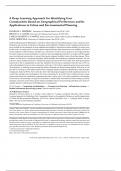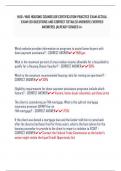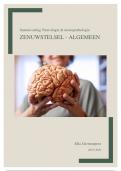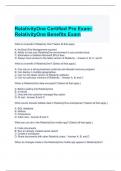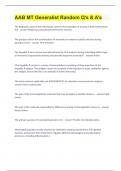A Deep Learning Approach for Identifying User
Communities Based on Geographical Preferences and Its
Applications to Urban and Environmental Planning
DANIELLE L. FERREIRA∗ , University of California Santa Cruz (UCSC), USA
BRUNO A. A. NUNES, University of California San Francisco (UCSF), USA
CARLOS ALBERTO V. CAMPOS, Federal University of State of Rio de Janeiro (UNIRIO), Brazil
KATIA OBRACZKA, University of California Santa Cruz (UCSC), USA
Understanding human mobility plays a vital role in urban and environmental planning as cities continue to grow.
Ubiquitous geo-location, localization technology and availability of bigdata-ready computing infrastructure
have enabled the development of more sophisticated models to characterize human mobility in urban areas.
In this work, our main goal is to extract spatio-temporal features that characterize user mobility and, based
on the similarity of these features, identify user communities. To this end, we propose a novel approach that
leverages image processing techniques to represent user geographical preferences as images and then apply
deep convolutional autoencoders to extract latent spatio-temporal mobility features from these images. These
features are then fed to a clustering algorithm, which identifies the underlying community structures. We use
a diverse urban mobility datasets to validate the proposed framework. Our results show that the proposed
framework is able to significantly increase the similarity between intra-community nodes (by up to 107%) as
well as dissimilarity between inter-community nodes (up to 54%) when compared against no pre-processing
of the datasets, i.e without pre-processing the datasets through any feature fusion method. Moreover, it was
also able to reach up to 100% improvement when compared against community identification using Principal
Component Analysis (PCA). Our results also show that the proposed approach yields significant increase in
contact time amongst users belonging to the same community, by up to 80% when compared to the average
contact time when not considering community structures, and by up to 150% when compared to the baseline.
To the best of our knowledge, our proposal is the first to consider deep convolutional autoencoding to perform
automatic extraction of non-linear spatio-temporal mobility features characterizing individual users from raw
mobility datasets with the goal of identifying user communities.
CCS Concepts: · Computing methodologies → Unsupervised learning; · Information systems →
Mobile information processing systems; Spatial-temporal systems.
ACM Reference Format:
Danielle L. Ferreira, Bruno A. A. Nunes, Carlos Alberto V. Campos, and Katia Obraczka. 2020. A Deep
Learning Approach for Identifying User Communities Based on Geographical Preferences and Its Applications
to Urban and Environmental Planning. ACM Trans. Spatial Algorithms Syst. 1, 1 (August 2020), 24 pages.
https://doi.org/10.1145/nnnnnnn.nnnnnnn
∗ Current affiliation: Departament of Cardiology, University of California San Francisco (UCSF).
Authors’ addresses: Danielle L. Ferreira, danielle.ferreira@uniriotec.br, University of California Santa Cruz (UCSC), Santa
Cruz, USA; Bruno A. A. Nunes, bruno.astutoarouchenunes@ucsf.edu.br, University of California San Francisco (UCSF), San
Francisco, USA; Carlos Alberto V. Campos, beto@uniriotec.br, Federal University of State of Rio de Janeiro (UNIRIO), Rio de
Janeiro, Brazil; Katia Obraczka, katia@soe.ucsc.edu, University of California Santa Cruz (UCSC), Santa Cruz, USA.
Permission to make digital or hard copies of all or part of this work for personal or classroom use is granted without fee
provided that copies are not made or distributed for profit or commercial advantage and that copies bear this notice and
the full citation on the first page. Copyrights for components of this work owned by others than ACM must be honored.
Abstracting with credit is permitted. To copy otherwise, or republish, to post on servers or to redistribute to lists, requires
prior specific permission and/or a fee. Request permissions from permissions@acm.org.
© 2020 Association for Computing Machinery.
2374-0353/2020/8-ART $15.00
https://doi.org/10.1145/nnnnnnn.nnnnnnn
ACM Trans. Spatial Algorithms Syst., Vol. 1, No. 1, Article . Publication date: August 2020.
,2 Danielle L. Ferreira, Bruno A. A. Nunes, Carlos Alberto V. Campos, and Katia Obraczka
1 INTRODUCTION
Currently, about fifty percent of the world’s population lives in urban areas and the forecast is
that by 2050 this percentage will grow to approximately seventy percent [10]. As such, the greatest
wave of city migration is yet to come and together with it a wide range of challenges raised by the
need to improve the style and quality of life of a growing urban population. According to [10], a
better understanding of city dynamics would allow for improved services as well as minimized
environmental impact resulting from urban expansion.
Urban mobility, defined as the displacement of people across an urban region over time [9], is
critical to understand the dynamics of an urban center. As cities grow, the complexity of urban
transportation and transit systems and the time people spend in transit will greatly increase. As a
result, expanded- and new transportation services will be required demanding deeper investigation
into urban mobility [3, 43]. Additionally, understanding human mobility in urban areas is crucial
to other city management and planning applications such as public health, emergency response,
education, entertainment, shopping, etc [29].
As computational resources become more widely available through cloud- and edge computing
services, machine learning techniques, such as neural networks (NNs), which not too long ago
were considered totally prohibitive in terms of their computational demands, have now become
mainstream tools to handle the enormous amounts of data being generated by sensing devices
embedded mostly everywhere. A special category of NNs named deep convolutional autoencoders
has been used as an efficient and effective image processing technique and have, more recently,
been applied in a variety of other domains, ranging from data augmentation, de-noising, activity
and speed recognition, computer vision, to name a few [40].
In this work, we propose a framework to identify user communities based on user’s spatio-
temporal geographical preferences. The proposed framework employs a deep convolutional autoen-
coder (CAE) architecture to learn latent spatio-temporal mobility features from an image-based
representation of user mobility traces recorded in a variety of urban scenarios. From these mobility
datasets, the proposed framework is able to identify geographical preference similarities among
users and in turn group users into communities based on such preferences.
To validate and evaluate our CAE framework, we use a diverse set of publicly available mobility
traces and show that the proposed framework is able to significantly increase similarity between
intra-community nodes (by up to 107% for the datasets used) as well as dissimilarity between
inter-community nodes (up to 54% for our datasets) when compared with our baseline, i.e, without
pre-processing the datasets through any feature fusion method. Moreover, it was also able to reach
up to 100% improvement when compared with an alternate community extraction approach that uses
Principal Component Analysis (PCA). Besides the degree of similarity amongst users in the same
communities and dissimilarities amongst users in different communities, we also evaluate contact
times between users, which are an important metric for opportunistic networks. Our experiments
show that our CAE approach yields a significant increase in contact times between users belonging
to the same community (for the datasets considered, by up to 80% when compared to the average
contact time when not considering community structures and by up to 150% when compared to user
communities extracted from the baseline). Additionally, our approach also increases contact time
between members of the same community (from 10% up to 125% for our datasets) when compared
to PCA.
While autoencoders have been widely used to predict future mobility trajectories and traffic
conditions, to the best of our knowledge, our work is the first to consider deep autoencoder NNs to
perform automatic extraction of non-linear spatio-temporal mobility features from real mobility
ACM Trans. Spatial Algorithms Syst., Vol. 1, No. 1, Article . Publication date: August 2020.
, A Deep Learning Approach for Identifying User Communities Based on Geographical Preferences
and Its Applications to Urban and Environmental Planning 3
datasets ultimately achieving improved user community identification. As such, we can summarize
the contributions of this paper as follows:
• We propose an image-based representation of spatio-temporal user mobility features extracted
from mobility traces. Such mobility records contain only a time series of user locations (either
GPS coordinates or Access Point associations/disassociations) that capture user mobility in a
variety of scenarios, including different urban settings (such as downtown areas, University
campuses, etc) that incorporate a variety of modes of transportation, including private
vehicles, buses, taxis, pedestrians, and bikes.
• We develop a deep convolution autoencoder (CAE) based approach to perform automatic
spatio-temporal mobility features extraction contained in the images representing user
mobility features.
• We demonstrate that our approach to automatically extract user mobility features by em-
ploying the proposed image-based method and deep convolutional learning architecture
can be used as input to clustering algorithms for identifying communities that group users
according to similar spatial and temporal mobility patterns.
• Through extensive experimentation using mobility records from a variety of scenarios, we
show quantitative evidence that by using autoencoders’ nonlinear feature fusion capabil-
ity ahead of clustering can significantly increase the quality of the community structures
identified when compared to linear feature fusion approaches such as PCA.
• Finally, we evaluate different autoencoder architectures, namely fully-connected, variational,
and convolutional and discuss their impact on the performance of our user mobility based
community identification framework.
The remainder of this paper is organized as follows. An overview of background and related work
is discussed in Section 2. Our proposed approach is described in detail in Section 3. In Section 4, we
present our experimental methodology, including the mobility datasets studied, as well as define
the performance metrics used for evaluating and validating our proposal. Section 5 presents our
experimental results and Section 6 discusses some applications of the proposed framework in the
context of urban and environmental planning and management. Finally, Section 7 concludes the
paper with some directions for future work.
2 BACKGROUND AND RELATED WORK
This section reviews related work on mobility characterization and presents a brief overview of
autoencoders and our rationale for using them to extract features from raw user mobility datasets.
2.1 Mobility Characterization
In recent years, the wide availability of localization devices and techniques, such as the Global
Positioning System (GPS), cellular base-station and Wi-Fi positioning systems have enabled human
mobility data to be captured and recorded in a seamless and ubiquitous fashion. The availability
of such positioning data not only enabled a variety of services and applications including road
navigation, intelligent transportation systems, ride-sharing, etc, but also, motivated a large body of
research on user mobility characterization and modeling. Below, we briefly describe some examples.
User mobility was found to be highly predictable and largely independent of the distance users
cover on a regular basis [54], where most users visit the same places and share the same probability
density function for places visited [25]. Additionally, the probability of a user to visit new locations
or returning to previously visited locations follows a scaling law pattern, i.e., the probability of users
visiting a new place decreases over time, while the chances of returning to places they frequently
visit increases. Also, it is well known that members of the same social group also present similar
ACM Trans. Spatial Algorithms Syst., Vol. 1, No. 1, Article . Publication date: August 2020.

